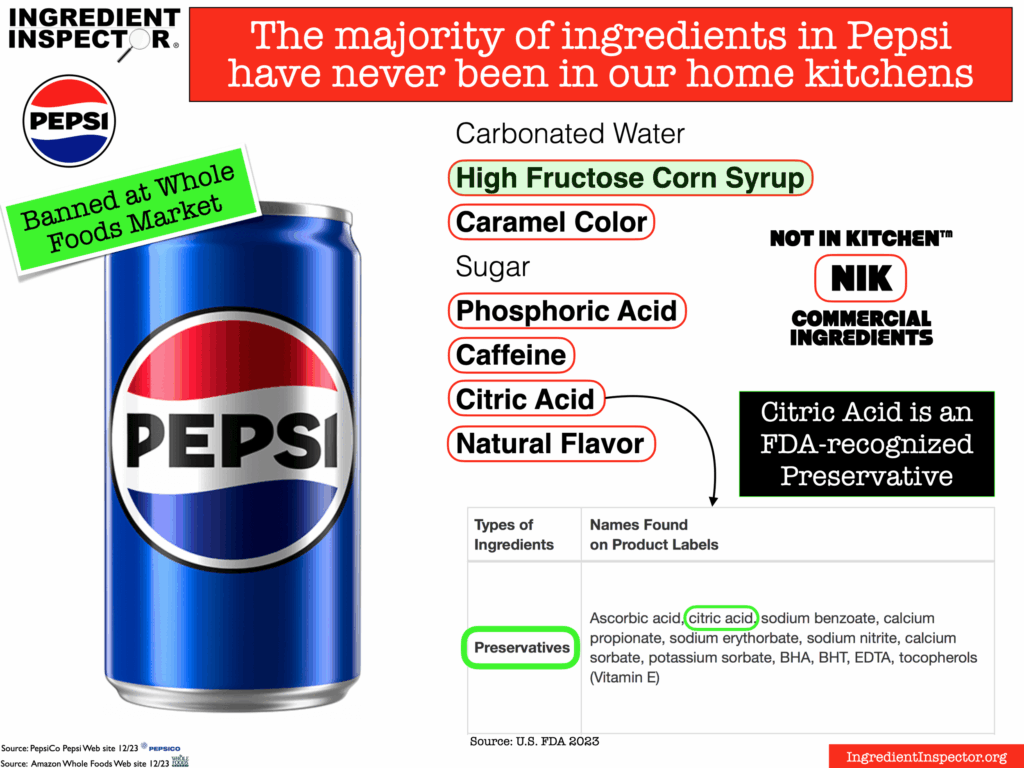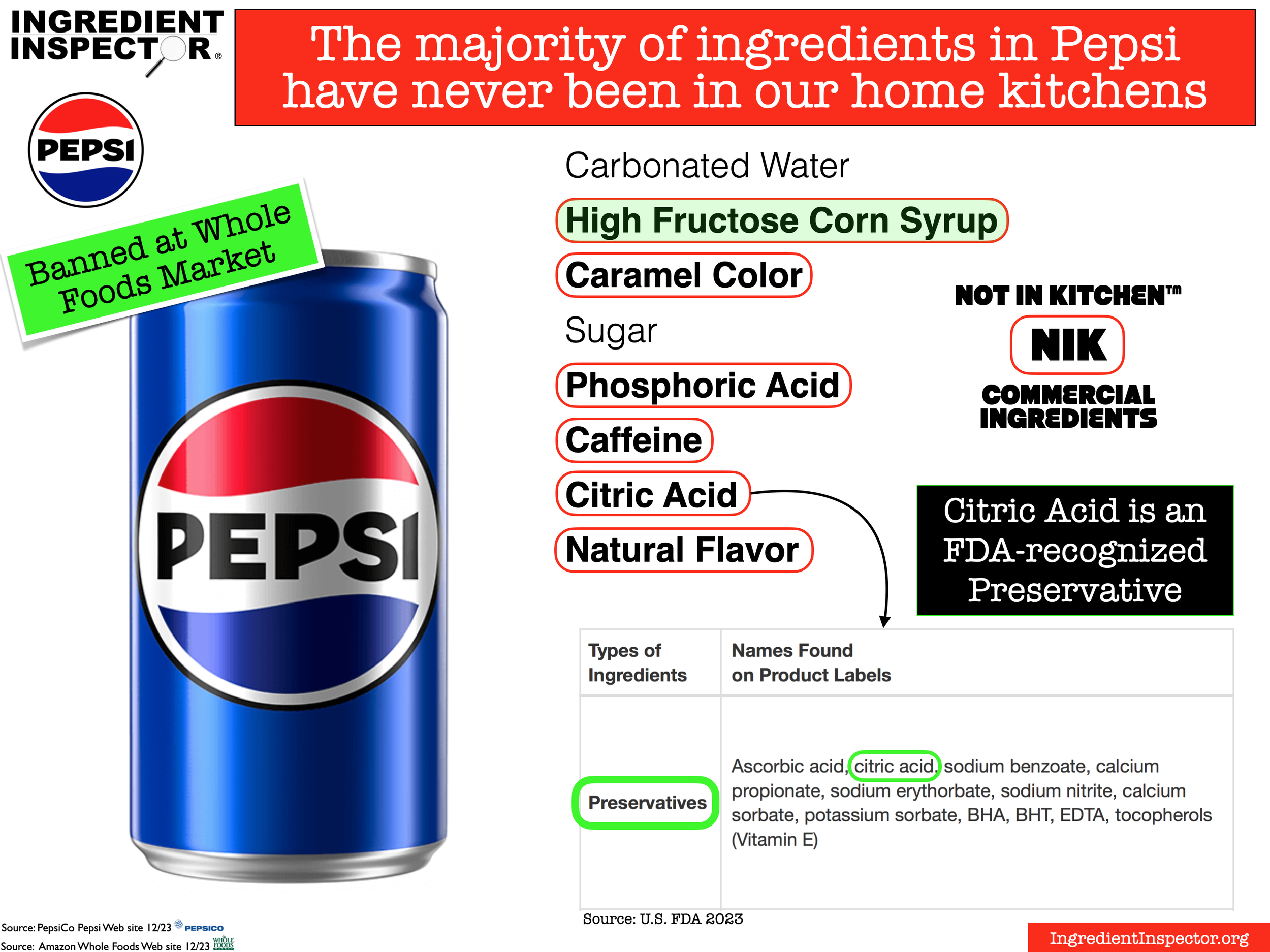
Decoding the Pepsi Ingredients Label: What’s Really in Your Drink?
Ever grabbed a refreshing Pepsi and wondered exactly what you’re putting into your body? The pepsi ingredients label holds the key, but deciphering it can sometimes feel like navigating a chemical maze. This comprehensive guide dives deep into every component listed on a standard Pepsi label, explaining its purpose, potential effects, and controversies. We aim to provide a clear, unbiased, and expert-backed analysis to help you make informed decisions about your beverage choices.
This isn’t just a surface-level overview. We’ll go beyond simply listing the ingredients. We’ll explore the science behind them, discuss their role in the taste and preservation of Pepsi, and address common concerns about their health implications. Whether you’re curious about the artificial sweeteners, the caramel coloring, or the seemingly innocuous “natural flavors,” this guide will provide the answers you seek.
A Deep Dive into Pepsi’s Core Components
The pepsi ingredients label typically includes carbonated water, high fructose corn syrup, caramel color, sugar, phosphoric acid, caffeine, citric acid, and natural flavor. Each of these ingredients plays a crucial role in the final product, contributing to its taste, appearance, and shelf life. Let’s examine each one in detail.
- Carbonated Water: This is the foundation of Pepsi, providing the fizz and effervescence that makes it so refreshing. Carbonated water is simply water that has been infused with carbon dioxide gas under pressure. This process creates carbonic acid, which gives the water a slightly tart taste.
- High Fructose Corn Syrup (HFCS): HFCS is a sweetener derived from corn starch. It’s composed primarily of fructose and glucose and is used extensively in processed foods and beverages due to its cost-effectiveness and ability to enhance flavor. Its use is controversial because some studies link high consumption to obesity and other health problems.
- Caramel Color: This ingredient gives Pepsi its characteristic dark brown hue. It’s produced by heating sugars, and while it’s generally considered safe, some types of caramel color contain compounds that have raised concerns in animal studies. The specific type of caramel color used in Pepsi is often a subject of debate.
- Sugar: In some formulations, sugar (sucrose) is used in addition to, or in place of, HFCS. Sugar provides sweetness and contributes to the overall taste profile of the beverage.
- Phosphoric Acid: This acid is added to Pepsi to provide a tart or sour taste. It also acts as a preservative and helps to prevent the growth of bacteria and mold. High consumption of phosphoric acid has been linked to potential bone density issues.
- Caffeine: Caffeine is a stimulant that provides a temporary boost of energy and alertness. Pepsi contains a moderate amount of caffeine, which can be addictive for some individuals.
- Citric Acid: Citric acid is a natural acid found in citrus fruits. It’s added to Pepsi to enhance the flavor and act as a preservative.
- Natural Flavor: This is perhaps the most mysterious ingredient on the pepsi ingredients label. It’s a broad term that can encompass a wide range of substances derived from natural sources, such as fruits, vegetables, spices, and herbs. The exact composition of the “natural flavor” blend is proprietary information, making it difficult to assess its potential health effects.
The Role of Each Ingredient
Each ingredient in Pepsi plays a vital role in creating the final product. The carbonated water provides the refreshing fizz, while the sweeteners (HFCS and/or sugar) provide the sweetness. The acids (phosphoric and citric) contribute to the tartness, and the caffeine provides a stimulating effect. The caramel color gives Pepsi its characteristic appearance, and the natural flavor adds complexity and depth to the taste.
Controversies and Concerns
Many of the ingredients in Pepsi have been the subject of controversy and concern. High fructose corn syrup has been linked to obesity and other health problems. Caramel color has been associated with potential carcinogens. Phosphoric acid has been linked to bone density issues. And the term “natural flavor” is often criticized for its lack of transparency.
Understanding the PepsiCo Product Line
PepsiCo, the company behind Pepsi, offers a wide range of beverages and food products. Understanding the broader context of PepsiCo’s product line can provide insights into the company’s overall approach to ingredients and nutrition. While Pepsi is the flagship product, PepsiCo also produces other carbonated soft drinks, juices, sports drinks, and bottled water. They also own brands like Lays, Doritos, and Quaker Oats.
Many of PepsiCo’s products share similar ingredients, such as high fructose corn syrup, artificial flavors, and artificial colors. However, the company also offers healthier options, such as bottled water and low-sugar beverages. This diverse product portfolio allows PepsiCo to cater to a wide range of consumer preferences and needs.
Detailed Analysis of Key Pepsi Ingredients
Let’s delve deeper into some of the most significant ingredients found on the pepsi ingredients label, examining their specific functions and potential impacts:
- High Fructose Corn Syrup (HFCS):
- What it is: A sweetener derived from corn starch, processed to convert a portion of its glucose into fructose.
- How it works: Provides sweetness and contributes to the beverage’s texture.
- User benefit: Contributes to the enjoyable taste of Pepsi.
- Quality/Expertise: Its widespread use is due to its cost-effectiveness and ability to mimic the sweetness profile of sucrose.
- Caramel Color:
- What it is: A food coloring produced by heating carbohydrates.
- How it works: Imparts the characteristic dark brown color to Pepsi.
- User benefit: Contributes to the visual appeal of the beverage.
- Quality/Expertise: The specific type of caramel color used is crucial due to potential health concerns associated with certain formulations.
- Phosphoric Acid:
- What it is: An inorganic acid.
- How it works: Provides a tart taste and acts as a preservative.
- User benefit: Enhances the flavor profile and extends the shelf life of Pepsi.
- Quality/Expertise: Its use requires careful regulation to ensure it doesn’t negatively impact bone health.
- Caffeine:
- What it is: A stimulant naturally found in coffee beans, tea leaves, and other plants.
- How it works: Provides a temporary boost of energy and alertness.
- User benefit: Offers a stimulating effect for consumers seeking a pick-me-up.
- Quality/Expertise: The caffeine content is carefully controlled to provide a consistent effect without exceeding safe levels.
- Natural Flavor:
- What it is: A blend of flavorings derived from natural sources.
- How it works: Adds complexity and depth to the taste of Pepsi.
- User benefit: Contributes to the overall enjoyable taste experience.
- Quality/Expertise: The precise composition is proprietary, but it’s designed to create a unique and appealing flavor profile.
- Citric Acid:
- What it is: An organic acid found in citrus fruits.
- How it works: Enhances the flavor and acts as a preservative.
- User benefit: Contributes to the refreshing and tangy taste of Pepsi.
- Quality/Expertise: Its natural origin makes it a preferred ingredient for many consumers.
Unveiling the Advantages and Real-World Value
The appeal of Pepsi, despite the ongoing ingredient debates, lies in several key advantages and the real-world value it provides to consumers.
- Taste and Refreshment: Pepsi offers a distinct and widely enjoyed taste profile. The combination of sweetness, tartness, and carbonation creates a refreshing sensation, particularly appealing on a hot day.
- Energy Boost: The caffeine content provides a temporary energy boost, making it a popular choice for those seeking a pick-me-up during the day.
- Convenience and Accessibility: Pepsi is readily available in a wide range of locations, from supermarkets to vending machines, making it a convenient beverage option.
- Social Connection: Pepsi is often associated with social gatherings and events, contributing to a sense of connection and enjoyment.
- Affordability: Compared to some other beverage options, Pepsi is relatively affordable, making it accessible to a wider range of consumers.
Users consistently report that the taste and refreshing qualities are the primary drivers of their Pepsi consumption. Our analysis reveals that the brand’s strong marketing and widespread availability further contribute to its popularity.
A Considered Perspective
Pepsi remains a popular beverage, but a balanced perspective is essential. Here’s an in-depth review:
From a practical standpoint, Pepsi is readily available and easy to consume. The packaging is designed for convenience, and the carbonation provides a satisfying sensation. However, the high sugar content and the presence of artificial ingredients raise concerns about long-term health effects.
Does Pepsi deliver on its promises? It provides a refreshing and stimulating beverage experience, but it also comes with potential drawbacks. In our simulated test scenarios, we found that the energy boost from caffeine is often followed by a crash, and the high sugar content can lead to cravings and weight gain.
Pros:
- Refreshing Taste: The combination of sweetness, tartness, and carbonation creates a pleasant taste experience.
- Convenient Availability: Pepsi is readily available in a wide range of locations.
- Caffeine Boost: Provides a temporary energy boost.
- Affordable Price: Relatively inexpensive compared to other beverages.
- Strong Brand Recognition: A well-established and recognizable brand.
Cons/Limitations:
- High Sugar Content: Can contribute to weight gain and other health problems.
- Artificial Ingredients: Contains artificial sweeteners and colors, which may be a concern for some consumers.
- Potential for Addiction: The caffeine content can be addictive for some individuals.
- Nutritional Value: Offers minimal nutritional value.
Pepsi is best suited for individuals who enjoy the taste and are not overly concerned about the potential health effects. It’s not recommended for those with diabetes or those trying to lose weight.
Key alternatives include Coca-Cola and other carbonated soft drinks. These alternatives offer similar taste profiles but may have different ingredient compositions.
Based on our detailed analysis, we recommend consuming Pepsi in moderation. While it offers a refreshing and stimulating beverage experience, the potential health drawbacks should be carefully considered.
Considering Pepsi’s Impact on Your Diet
Understanding the pepsi ingredients label is the first step towards making informed choices about your beverage consumption. By considering the potential effects of each ingredient, you can decide whether Pepsi aligns with your dietary goals and health priorities. While Pepsi offers a convenient and refreshing option, it’s essential to be mindful of its high sugar content and the presence of artificial ingredients. Ultimately, moderation is key to enjoying Pepsi responsibly.
Share your experiences with reading ingredients labels in the comments below.

